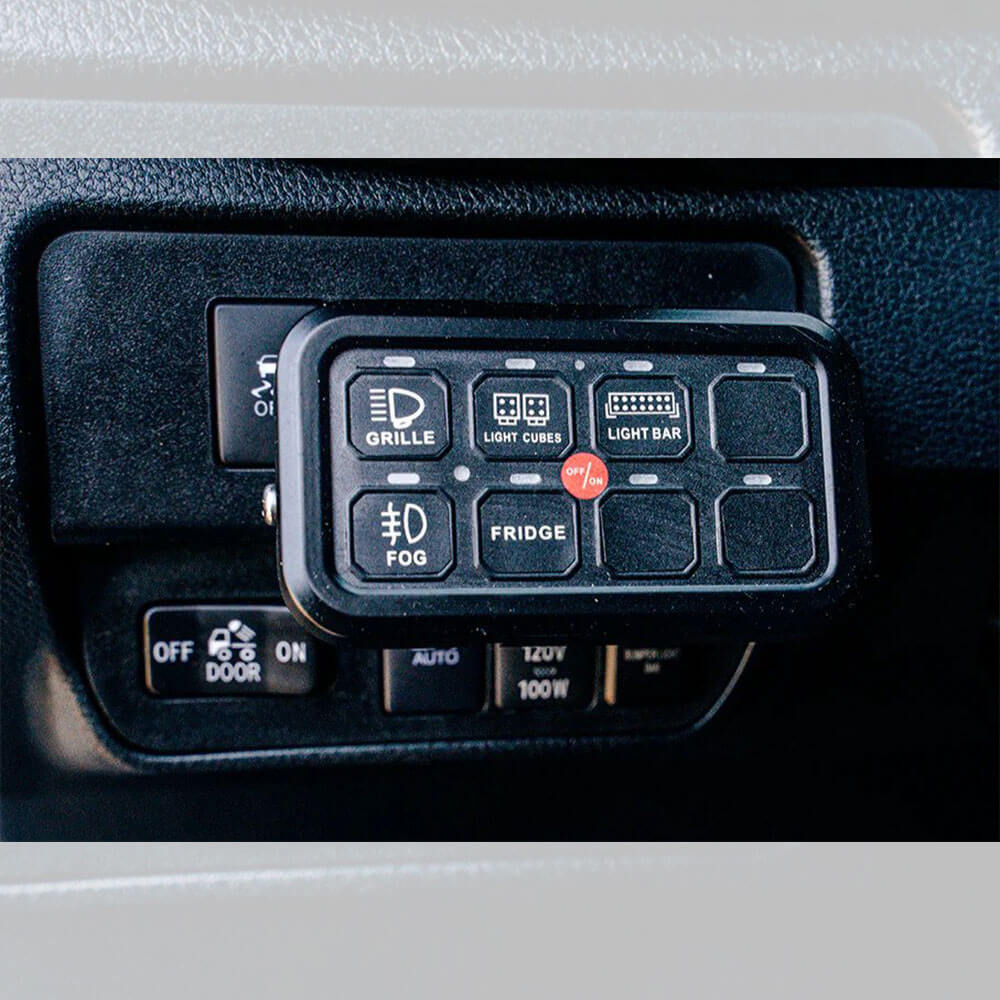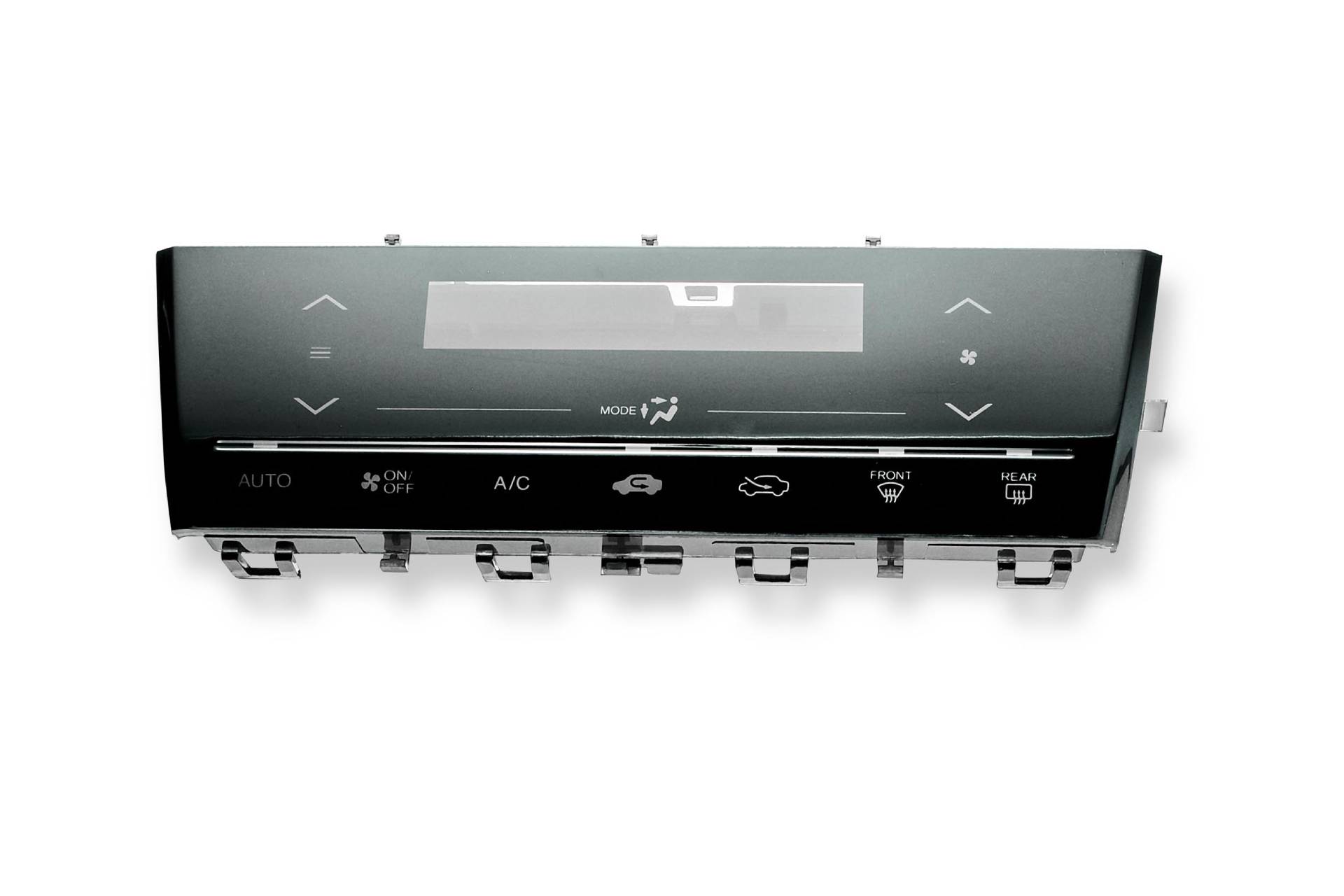The Production Refine Behind Switch Over Backlighting: What You Required to Know
The manufacturing procedure behind switch backlighting includes complex steps that protect capability and longevity. From the choice of materials to the setting up of components, each phase is vital. Automated machinery plays a considerable function in incorporating LEDs and diffusive elements. Quality assurance measures better assure that the final product satisfies criteria. As modification choices increase, the potential for innovative styles emerges. What variables will shape the future of button backlighting innovation?
Understanding Change Backlighting Modern Technology
Although switch backlighting may feel like a basic feature, it encompasses various technologies that boost individual experience in electronic gadgets. At its core, backlighting offers to illuminate buttons, making them noticeable in low-light environments. This performance relies upon different methods, such as LED and fiber optic modern technologies, each offering unique benefits. LEDs are commonly preferred for their efficiency, durability, and vivid colors, enabling personalized lights alternatives. In comparison, optical fiber can produce a softer radiance, offering an extra cosmetically pleasing appearance.Moreover, the assimilation of backlighting can boost customer access, particularly for individuals with visual impairments. The design of backlit switches likewise thinks about power intake, as modern devices aim to balance illumination with battery life. Inevitably, the application of button backlighting modern technology plays an important role in enhancing the functionality and appeal of digital gadgets, transforming regular interfaces right into visually engaging experiences.
Trick Parts of Backlit Changes
The essential components of backlit buttons make up a number of essential components that function with each other to deliver effective lighting and performance. At the core is the button system itself, which can be either mechanical or digital, enabling customer communication. Bordering this device are LED lights, which give the lighting essential for presence in low-light problems. These LEDs are generally installed on a circuit board, assuring proper connection and power distribution.Additionally, a diffuser is commonly used to evenly distribute the light produced by the LEDs, developing an uniform radiance across the button surface area. The housing of the button plays a significant role too, as it needs to safeguard interior elements while allowing light to pass with purposefully placed openings or transparent materials. A printed graphic overlay might be applied to communicate signs or text, enhancing functionality and aesthetics. With each other, these elements ensure the effectiveness of backlit buttons in numerous applications.
Material Selection for Toughness and Visual appeal
Material choice plays a crucial role in balancing sturdiness and aesthetics in switch backlighting. Key residential or commercial properties of materials, such as resistance to put on and environmental elements, considerably influence their lasting performance. In addition, aesthetic layout factors to consider have to align with capability to create durable and visually appealing items.
Key Material Quality
Toughness and aesthetics are critical variables in the product choice process for button backlighting. The materials made use of need to stand up to mechanical tension, heats, and potential chemical direct exposure while keeping their visual allure. Typical choices consist of polycarbonate and acrylic, which use robust effect resistance and optical clarity. These products can withstand duplicated use without breaking or fading. Furthermore, the choice of light diffusion homes is necessary; products ought to successfully distribute light equally to improve exposure. Surface treatments, such as finishes, can additionally improve durability and scrape resistance. Ultimately, picking the right products warranties that change backlighting carries out accurately over time, while likewise adding to the general layout and user experience.
Aesthetic Design Considerations

Long-lasting Efficiency Variables
The interaction in between aesthetic appeals and capability expands beyond visual charm, including the long-lasting efficiency of switch backlighting. Material option is important in achieving longevity and preserving aesthetic top qualities over time. Top quality plastics, such as polycarbonate or ABS, are often chosen for their resistance to put on and environmental aspects. Additionally, the option of LED components impacts durability, as superior-grade LEDs use boosted illumination and reduced warmth output. Coatings, such as anti-fingerprint or UV-resistant surfaces, can better protect against degradation and discoloration. By incorporating robust products and progressed innovations, manufacturers can ensure that button backlighting not just satisfies aesthetic criteria however also endures the roughness of daily use, eventually enhancing customer contentment and product lifespan.
The Setting Up Process of Backlit Switches Over
The assembly process of backlit buttons includes thorough component preparation methods to determine compatibility and functionality. A streamlined assembly line operations is important to maximize effectiveness and lessen manufacturing time. Furthermore, robust quality assurance actions are applied to assure that each switch satisfies market requirements and customer expectations.
Part Preparation Strategies
Efficient assembly of backlit buttons begins with thorough prep work of their elements, making sure that each component meets the required specifications for functionality and toughness. This preparation procedure consists of the choice of high-quality materials, such as long lasting plastics and effective light-emitting diodes (LEDs) Each element goes through complete assessment and screening to recognize any kind of defects that could hinder efficiency. Furthermore, components might be covered or pre-treated to boost their strength against deterioration. Switch Backlighting. Correct cleaning and handling methods are additionally critical to stop contamination prior to setting up. By applying these component prep work strategies, manufacturers can improve the assembly procedure, decrease the possibility of failings, and boost the general quality of the final backlit switch product
Setting Up Line Process
Streamlining the production line process for backlit look at this site switches entails a series of coordinated actions that guarantee each part is correctly integrated right into the end product. The base of the switch is placed on the conveyor system, where automated machinery precisely puts the LED lights right into the designated slots. Following this, a layer of diffusive product is included to guarantee also light circulation. Next off, the switch cap is securely attached, and electric connections are made with accuracy to ensure performance. Workers monitor the process at numerous phases, examining for positioning and safe installations. The set up buttons move to packaging, ready for delivery. Each step is created to improve efficiency while keeping the integrity of the end product.

Quality Control Steps
Quality assurance measures in the assembly process of backlit switches are necessary to verify that each system satisfies rigid performance and aesthetic criteria. At numerous stages of setting up, aesthetic assessments are performed to recognize any type of flaws in components, such as incorrect LED placement or damaged soldering. Practical screening is performed to confirm that the backlighting runs correctly, with uniform illumination and shade uniformity throughout each switch. Additionally, automated screening equipment might be used to look for electrical stability and responsiveness. Any units failing these analyses are remodelled or discarded to keep quality control. Comprehensive paperwork of these quality checks also assists in traceability and continual renovation, confirming that manufacturing methods advance to satisfy customer expectations and market requirements.
Quality Assurance Procedures in Manufacturing
While assuring the integrity of switch backlighting manufacturing, suppliers carry out a selection of quality assurance steps to keep high requirements. These steps incorporate numerous phases, starting with the option of raw products. Providers are carefully vetted to assure that just premium parts are made use of. During the manufacturing process, routine inspections are carried out to identify any type of problems or variances in the backlighting systems.Automated screening devices plays a vital function in examining the capability and durability of the products. This includes checks for luminous strength, color accuracy, and life expectancy. In addition, makers usually use statistical process control (copyright) methods to keep track of manufacturing variables, permitting immediate modifications when discrepancies take place. Post-production, final inspections guarantee that the completed items fulfill predefined requirements before they are packaged and shipped. By sticking to these thorough quality assurance steps, suppliers can with confidence deliver high-performing and trustworthy button backlighting options to their consumers.
Customization Options for Improved Individual Experience
A broad variety of customization options is available for button backlighting, permitting individuals to enhance their total experience. Customers can pick from numerous colors, brightness levels, and lighting impacts to customize the backlighting to their preferences. Numerous makers provide software that enables customers to develop dynamic illumination profiles, which can transform based upon use scenarios, such as gaming or keying. Some switches even provide programmable functions, permitting certain keys to brighten in unique colors, helping in functionality and aesthetics.Furthermore, users might select in between different sorts of materials and surfaces for the button real estate, influencing both the feel and look of the backlighting. Transparent or clear materials can boost light diffusion, developing use this link a more uniform radiance. Ultimately, these customization alternatives promote a tailored user interface that not only boosts usability yet also reflects specific design, contributing to an extra appealing individual experience.
The Future of Switch Over Backlighting Advancements
As technology proceeds to breakthrough, the future of button backlighting developments is poised to supply a lot more innovative features and enhanced individual experiences. Arising trends show a shift in the direction of adaptive lights systems that change illumination and shade based on customer choices and ambient problems. This personalization can enhance usability and ease of access, specifically for those with visual impairments.Furthermore, integration with clever home ecosystems provides the potential for synchronized lights effects that enhance the total environment of a room. Advancements in products, such as flexible OLEDs, might lead to thinner, much more effective designs, enabling higher convenience in applications.Additionally, energy-efficient options, such as solar-powered alternatives and low-power leds, will certainly add to a lasting future in backlighting - Switch Backlighting. Innovations in producing methods, such as 3D printing, might better facilitate modification, making it possible for individuals to create special switch layouts. Overall, the future of button backlighting promises a mix of performance, aesthetic appeal, and sustainability
Often Asked Inquiries
What Sorts Of Applications Typically Utilize Backlit Switches?
Backlit buttons are typically used in numerous applications, consisting of auto control panels, customer electronic devices, medical tools, and industrial control board. These applications benefit from improved visibility and usability, specifically in low-light conditions, boosting user experience and performance.
How Do Backlit Buttons Effect Energy Consumption?
Backlit buttons can influence power consumption by requiring added power for illumination. Depending on the modern technology used, such as LED versus typical bulbs, the effect on total power usage can vary considerably more tips here throughout different applications.
Can Backlit Changes Be Fixed if Harmed?
Backlit buttons, if damaged, can usually be fixed relying on the degree of the damages. Minor issues like LED failing may be reparable, while a lot more severe damages might demand complete replacement of the switch.
What Are the Safety Requirements for Backlit Change Manufacturing?
The safety and security criteria for backlit button production include electrical security, material toughness, and customer availability. Compliance with regulations assurances that items are trustworthy, lower risks, and offer a risk-free customer experience in numerous applications.

Exactly How Do Environmental Elements Influence Backlit Change Efficiency?
Environmental aspects, such as temperature level and humidity, greatly influence backlit switch efficiency. Severe problems can affect materials' resilience and light result, possibly causing lowered capability and life-span of the switches under differing operational settings. Switch backlighting might seem like a basic feature, it includes numerous technologies that enhance user experience in electronic tools. Product option plays a crucial function in stabilizing longevity and aesthetics in switch backlighting. Sturdiness and aesthetic appeals are vital variables in the material selection process for button backlighting (Switch Backlighting). Aesthetic design plays an essential function in the choice of materials for switch backlighting, as it directly affects customer assumption and satisfaction. Some switches even use programmable attributes, enabling specific keys to brighten in distinct colors, helping in functionality and aesthetics.Furthermore, individuals may select in between different types of materials and surfaces for the button real estate, influencing both the appearance and feel of the backlighting